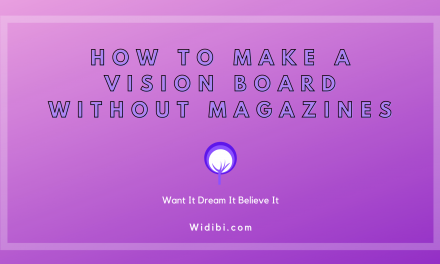I firmly believe that it’s possible to make a vision board for each and every occasion. While most people refer to a ‘Vision Board’ (singular), that’s certainly not to say that you can’t use ‘Vision Boards’ plural to help you set goals, drive ambition and, where applicable, invoke the law of attraction. I personally maintain three different boards – one is an instant vision board, where I need something to happen as quickly as possible, another is focused on personal and family goals, and the third is centred around work, which is what I want to discuss in this article.
I contributed to the Widibi Ultimate Introductory Guide to Vision Boards and part of that contribution briefly outlined the concept of creating a vision board for work. However, a single paragraph doesn’t really do something that is probably a hugely significant part of your life justice.
Before I get into the meat of this feature, I’d like to mention that this article is intended for employees rather than business owners. I plan to create something similar for the latter in the coming days, which will be available right here on the site. However, in the context of this guide, I’ going to discuss using vision boards for career advancement in a company you don’t own.
With that said, it doesn’t matter where you rank in your current employment. Whether you’re fresh out of school and just started with the company, or you’re a C-Level executive, or indeed anyone in between, the principles remain the same.
In This Article
A Vision Board for Work Begins with Goals
I tend to find that there’s rarely quite as much ‘stuff’ on a vision board for work. On a personal vision board, you or I might want to put our dream house, perfect car, a few career-related things and plenty more. Even if you use an entire wall as a board, you won’t have to work too hard to fill it up.
With a vision board for work, you can afford to be somewhat more selective. This largely comes down to the fact that you’re either happy in your job or you’re not. In the first case, there won’t be all that much you want to change. Sure, we’d all like a promotion, more money and perhaps some additional training, but we can consider this more as tweaks rather than a complete renovation.
If you find yourself in the latter scenario, where you want a completely different job altogether, then this can also lead to relatively few additions to your vision board for work.
Either way, you need to carry out the same process as you would when putting together a vision board for any purpose. You must be clear in your mind what you want.
Much of my previous employment took place in retail environments, when I was much younger, and later in offices. I’ll qualify the following by saying I’m not fully qualified to call myself anything special, and I’ve never worked in construction, sports or a multitude of other sectors. Nevertheless, I’m confident in my ability to share certain starting points that you might want to keep in mind. So, if you’re starting a vision board for work from scratch and struggling with how to get underway, consider some of the following and how they apply to your specific circumstances:
- Does your current role have an opportunity for advancement? If so, how long could it realistically take to reach the next level?
- Do you work for a large company with plenty of opportunities to explore different things? If not, can you see yourself doing something similar to what you do today in the long term?
- Are there people in the company you work for that you’d like to work more closely with?
- How do the various benefits stack up compared to looking elsewhere? Think about not only the salary you earn in the job, but incidental benefits too. That will vary depending on where you live, but also consider things like healthcare, insurance, pensions and anything else that may not be money in the bank, but certainly make your life easier.
These points should start you off thinking about where you are, and the next stage is to decide where you want to be. I know as well as anyone that this is potentially easier said than done. However, one of the great things about vision boards is that while they can be permanent, they don’t have to be. Goals change, sometimes even from one day to the next, but your vision board can change with them.
So, once you’re clear on where you are, it’s time to think about where you’d like to be. Again, this doesn’t need to be a high pressure situation. You might have changed your mind by the time you finish your vision board, but that’s okay.
Where you should pay attention is in being as detailed as possible. Vision boards can work with the law of attraction, but they don’t have to – at least not consciously. However, if you do want to employ the law of attraction as part of your vision, you should be able to visualise yourself doing your ideal job.
Consider these factors, but remember that you don’t need to be able to give a full answer for all of them:
- Who do you want to work for?
- Who do you want to work with?
- How much do you want to earn in the job?
- Do you want a job with a clear progression plan?
- Are there other benefits you rely on that you can receive as part of the compensation package through some jobs but not others?
- Is there a job you’d be happy to do for the rest of your working life?
You may answer yes or no to any of these, but the act of doing so will get you thinking about what your goals are and what you’d really like to achieve.
Creating a Vision Board for Work
I won’t spend too much time describing how to make a vision board as the concepts have been covered extensively here at Widibi. If you don’t know how to make one, I’ll refer you to the Ultimate Introductory Guide once again, and we have articles on everything from how to make a vision board without magazines to creating a vision board without any pictures at all.
The chances are you’ve seen a vision board before, and you only need about as many qualifications as I have to work out how they became what they are. What I will say is that you should choose one way to make your vision board for work and stick with it. Beyond that, the following are your primary considerations:
Physical or Digital?
There are benefits to creating both physical and digital vision boards. I do just about everything on a computer that can be done as such. Some days I feel like I might have forgotten how to write by hand. Conversely, I find the process of creating a physical vision board somewhat cathartic. The time taken poring over pictures and putting it all together can actually be really useful to clarify in your mind what you really want.
Conversely, digital vision boards are quicker, easier and convenient. If you’re bothered about not wasting paper, then they’re a no-brainer. I use a mix of both, and I’m adamant that in terms of success, there’s no difference at all outside of the habits of the vision board owner.
What do I mean by that? Well, let’s just say that you wouldn’t be the first person to spend hours creating a digital vision board on a laptop and then forgetting to ever open the file again!
Fixed or Portable?
Vision boards work best when they’re positioned where they’re needed most. A vision board on losing weight would be best positioned in the kitchen or the gym. A vision board for forming better habits is often best positioned in the bedroom.
Unsurprisingly, that means that a vision board for work will be most appropriate wherever you get work done.
If you’re currently unemployed and seeking to use a vision board to land a job, position it where you apply for jobs. This could be a certain room in your home, where it can take pride of place on the wall. If you always apply through the same laptop or computer, do it digitally and set it as the background wallpaper on your device of choice.
In both of these cases, fixed works, and portable does too.
The main reason you’ll need a portable vision board is if you can’t count on being in the same place while working. In most cases, that means you already have a job and want to either improve your lot with your existing employment, or wish to move on to something else that’s better suited to your needs. If you travel around for work, your phone wallpaper might be the best solution. After all, if you’re anything like me, no matter where you are at any given time, your phone won’t be too far away.
A Vision Board for Work Might Need to be Discreet
If you’ve concluded that your vision board for work will result in finding a different job, then it might not be the greatest idea to put it up on your office wall – especially if that office is open plan!
You’ve undoubtedly experienced the need to conceal something from your boss in the past. Most of us have been there when we had to leave work early for a ‘doctor’s appointment’, where the doctor is a local competitor and the appointment is an interview.
Such a scenario edges a digital vision board into the lead. You want to put it somewhere where you can easily view it regularly to ensure you stay on track, but you don’t want it to be clear and obvious to others around you. It’s a tricky balancing act, and you could keep it in a browser window that you remember to check when the coast is clear.
How Does a Vision Board for Work… Work?
Once again, I don’t want to spend too much time duplicating what’s written elsewhere here on the site, especially when I feel that vision boards tend to work in the same way regardless of their purpose. However, the most crucial factor comes down to one opinion:

Do you believe in the law of attraction? Do you even understand it? If not, there’s plenty about it here at Widibi.
The good news is that whether you answer this question with a yes or a no, a vision board for work will work for you.
A Vision Board for Work with the Law of Attraction
If you do believe in the law of attraction and you practice it outside of vision boards, your board for work will adopt familiar characteristics. The vision board serves as a visual depiction of what you want to achieve, and the more specific you are about the desired results, the better the outcome is likely to be. The universe will arrange circumstances around you so that all the right steps occur in the right order to get you from where you are when you create the vision board to where you want to be in the images on display.
A Vision Board for Work Without the Law of Attraction
Some say that vision boards only work with the law of attraction. Others posit that vision boards utilise the law whether you realise it or not.
Both could be right. I personally combine vision boards with the law of attraction. However, I’m a believer in their value even if the law isn’t involved in the slightest.
Much of it comes down to psychology (although I’m not a psychologist). We all have grand plans, goals and ambitions. However, how many of us can claim to make a conscious effort to work towards those goals without a reminder?
Without anything to do with the law of attraction, a vision board for work can:
- Prompt you to keep yourself open to opportunities, networking and new roles
- Remind you of any steps you need to take to reach your goals, such as undertaking a qualification, connecting with certain individuals or keeping your covering letter up to date
- Pick you up when you’re down at work, reminding you that there is light at the end of the tunnel
- Help you to make the right call when faced with important decisions. You can go beyond saying “yes” or “no” and also consider whether your decision gets you any closer to your goals
Vision Boards for Work – In Summary
As you’d imagine from anyone that writes for Widibi, I’m quite biased towards vision boards, but I have the results to make me feel that way. I feel they work for anything, especially where you can clarify your goals. Creating one around your work and employment is the perfect choice, whether you’ve decorated your home with vision boards or you’ve never done one before.
The process is no different to other niched down types of vision boards – start with a goal, decide on a format and illustrate it, with words, pictures or both. There are a few considerations to make, such as who you do and do not want to see your vision board, and you might not find yourself with as much content on the board as you’d expect on broader topics.
Whether you’re into the law of attraction or not, the principles remain the same (and if you’re not into it but would like to be, start with our article on how the law of attraction works) and you can credit yourself, the universe or anyone else you like. It’s a results business, and I’m confident you’ll see the results you desire if you’re patient and give things time to fall into place.
Even if you use the Instant Vision Board technique, things take time. You won’t go to sleep after creating a vision board for work as an office junior and wake up as the CEO, but you’ll have the clarity and inspiration you require to take the correct steps in the right direction. If you decide to change that direction along the way, that’s no problem at all as you can always update your vision board to reflect your current goals.










